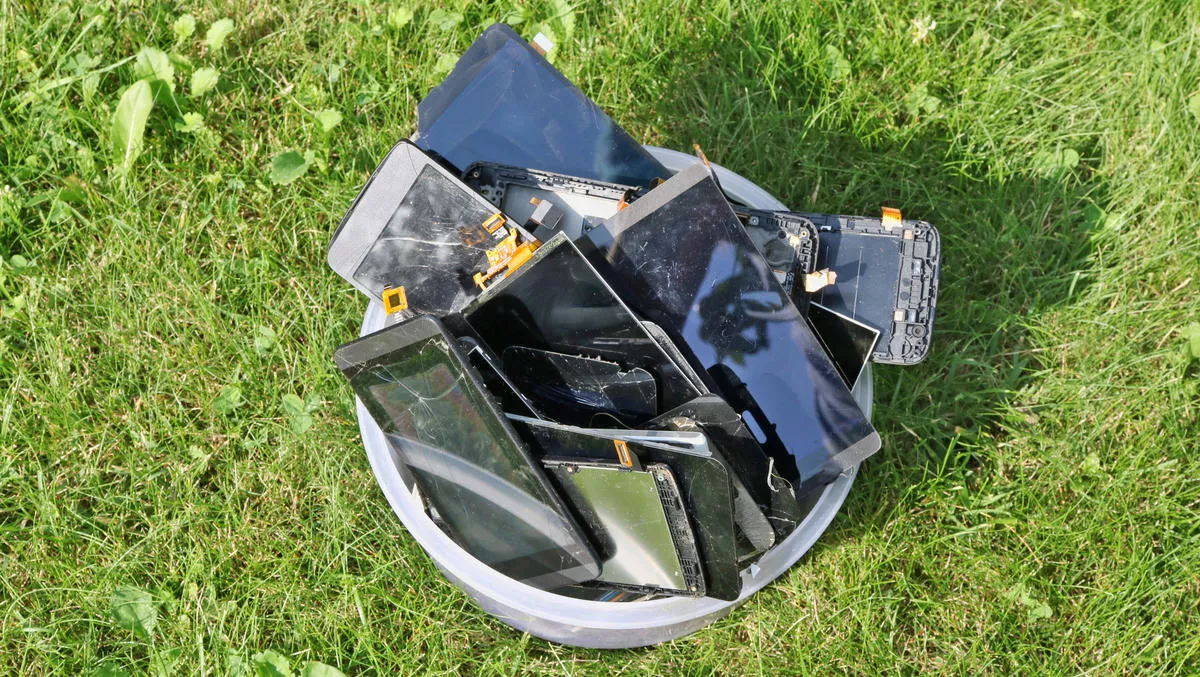
Time to take responsibility: E-waste - a global crisis
A record 53.6 million metric tonnes (Mt) of electronic waste was generated worldwide in 2019, up 21% in just five years, according to the UN's Global E-waste Monitor 2020, released today.
The new report also predicts global e-waste – discarded products with a battery or plug – will reach 74 Mt by 2030, almost a doubling of e-waste in just 16 years.
"Substantially greater efforts are urgently required to ensure smarter and more sustainable global production, consumption, and disposal of electrical and electronic equipment."
– United Nations University (UNU) Rector - UN Under Secretary General David M. Malone.
This makes e-waste the world's fastest-growing domestic waste stream, fueled mainly by higher consumption rates of electric and electronic equipment, short life cycles, and few options for repair.
Only 17.4% of 2019's e-waste was collected and recycled. This means that gold, silver, copper, platinum and other high-value, recoverable materials conservatively valued at US$57 billion, a sum greater than the gross domestic product of most countries, were mostly dumped or burned rather than being collected for treatment and reuse.
"More cooperative efforts are required to make people aware of this increasing issue and take appropriate countermeasures supplemented by appropriate research and training."
– United Nations Institute for Training and Research (UNITAR) executive director - UN Assistant Secretary-General Nikhil Seth.
According to the report, Asia generated the greatest volume of e-waste in 2019, some 24.9 Mt, followed by the Americas (13.1 Mt) and Europe (12 Mt), while Africa and Oceania generated 2.9 Mt and 0.7 Mt respectively, although this put Oceania second per capita.
For perspective, last year's e-waste weighed substantially more than all the adults in Europe, or as much as 350 cruise ships the size of the Queen Mary 2, enough to form a line 125 km long.
E-waste is a health and environmental hazard, containing toxic additives or hazardous substances such as mercury, which damages the human brain and / or coordination system.
"One in four children are dying from avoidable environmental exposures. One in four children could be saved, if we take action to protect their health and ensure a safe environment. "
– World Health Organization (WHO) Environment, Climate Change and Health Department director, Maria Neira.
Other key findings from the Global E-waste Monitor 2020:
- Proper e-waste management can help mitigate global warming. In 2019, an estimated 98 Mt of CO2-equivalents were released into the atmosphere from discarded fridges and air-conditioners, contributing roughly 0.3% of global greenhouse gas emissions.
- In per capita terms, last year's discarded e-waste averaged 7.3 kg for every man, woman and child on Earth.
- Europe ranked first worldwide in terms of e-waste generation per capita with 16.2 kg per capita. Oceania came second (16.1 kg)
- E-waste is a health and environmental hazard, containing toxic additives or hazardous substances such as mercury, which damages the human brain and / or coordination system. An estimated 50 tonnes of mercury — used in monitors, PCBs and fluorescent and energy-saving light sources — are contained in undocumented flows of e-waste annually.
- E-waste in 2019 was mainly small equipment (17.4 Mt), large equipment (13.1 Mt), and temperature exchange equipment (10.8 Mt). Screens and monitors, lamps, small IT, and telecommunication equipment represented 6.7 Mt, 4.7 Mt, and 0.9 Mt respectively.
- Since 2014, the e-waste categories increasing fastest in total weight terms are: temperature exchange equipment (+7%), large equipment (+5%), lamps and small equipment (+4%). According to the report, this trend is driven by the growing consumption of those products in lower-income countries, where those products improve the living standards. Small IT and telecommunication equipment have been growing more slowly, and screens and monitors have shown a slight decrease (-1%), explained largely by lighter flat panel displays replacing heavy cathode ray tube (CRT) monitors and screens.
- Since 2014, the number of countries that have adopted a national e-waste policy, legislation or regulation has increased from 61 to 78. While a positive trend, this is far from the target set by the International Telecommunication Union (ITU) which is to raise the percentage of countries with an e-waste legislation to 50%.
The Global E-waste Monitor 2020 (www.globalewaste.org - where you can view the full report) is a collaborative product of the Global E-waste Statistics Partnership (GESP), formed by UN University (UNU), the International Telecommunication Union (ITU), and the International Solid Waste Association (ISWA), in close collaboration with the UN Environment Programme (UNEP).
The World Health Organization (WHO) and the German Ministry of Economic Cooperation and Development (BMZ) also substantially contributed to this year's Global E-waste Monitor 2020.
"E-waste quantities are rising 3 times faster than the world's population and 13% faster than the world's GDP during the last five years. This sharp rise creates substantial environmental and health pressures and demonstrates the urgency to combine the fourth industrial revolution with a circular economy. The fourth industrial revolution either will advance a new circular economy approach for our economies or it will stimulate further resource depletion and new pollution waves. The progress achieved in e-waste monitoring by the Global E-waste Statistics Partnership is a sign of hope that the world can manage not only to monitor closely the e-waste rise but also to control their impacts and set up proper management schemes"
– International Solid Waste Association (ISWA) president Antonis Mavropoulos.


